
A decade or so ago, Mathew George Sankaramangalam decided to restore his family’s nearly 100-year-old ancestral home or tharavadu, in Thiruvalla, located in Kerala’s Pathanamthitta district. “I inherited this place in the late 1990s after my grandfather passed away, but it ended up lying unused for nearly 25 years,” says the Bengaluru-based businessman. During this process, the home, “a traditional Syrian Christian house” with finely-hewn woodwork, red-oxide floors and a tiled roof, went through various changes: the red-oxide floors were replaced with rustic tiles, modern attached toilets were added, and several rooms were repurposed.
“We kept the outer structure the same as the old house and made changes inside,” says Mathew, who spent three years and a considerable amount of money restoring his ancestral home. “If you want to bring in the original splendour as well as have modern amenities, it will cost you a lot,” he remarks, adding that the restoration cost of a heritage villa could go up to a crore, or even more.
While the satisfaction of having restored his family home more than made up for the significant capital costs of the project, he realised that “it needs revenue to sustain. It is very expensive to maintain a heritage home… like buying an elephant,” says Mathew, who decided to let out his ancestral home, CVM House, as a homestay in 2017, in an attempt to create a business model that could generate enough money for its upkeep.
Heritage homes often serve as wedding venues
| Photo Credit:
Special Arrangement
The property, which charges from ₹16,000 a day for an individual’s stay to ₹41,000 a day if a function is held on its premises, offers all modern amenities, round-the-clock housekeeping service, free WiFi and security. While CVM House does not provide food, it offers nearby hotel recommendations that deliver, he says, adding that the bulk of their revenue comes from weddings. According to him, many people like the idea of hosting “their receptions in the gardens with this heritage house in the backdrop,” says Mathew, who gets a lot of NRIs wanting to experience “hotel services in a heritage home”.

Kallukunnu House interiors
Meet the Nazaranis
Like Mathew, many Syrian Christians, also called Saint Thomas Christians or Nazaranis, are choosing to rent out their ancestral homes to travellers in an attempt to preserve these old buildings, which are an important legacy of one of the oldest Christian communities in the world. It is believed that the earliest Syrian Christians were Hindus who embraced Christianity in 52 AD when St. Thomas, one of Jesus Christ’s 12 apostles, arrived at the ancient port city of Muziris. “He came to preach to the Jews who were already here,” says Thressi John, who runs the 260-year-old Nazarani Tharavad, in Pala, Kottayam.

CVM House at dusk
The Kottukapally family that Thressi got married into were successful traders who moved to Pala from Mevada in 1737 when Angadi Pala, the town’s commercial hub, was set up. The family, considered one of the founding families of modern Pala, was in the pepper trade, and the first house it built in the area also doubled as a shop. As the town grew, making it harder to live in this commercial centre, they relocated to the house that is now called Nazarani Tharavad, “a stunning heritage home built in a unique fusion of Kerala and Dutch architectural styles,” as the homestay’s website puts it.
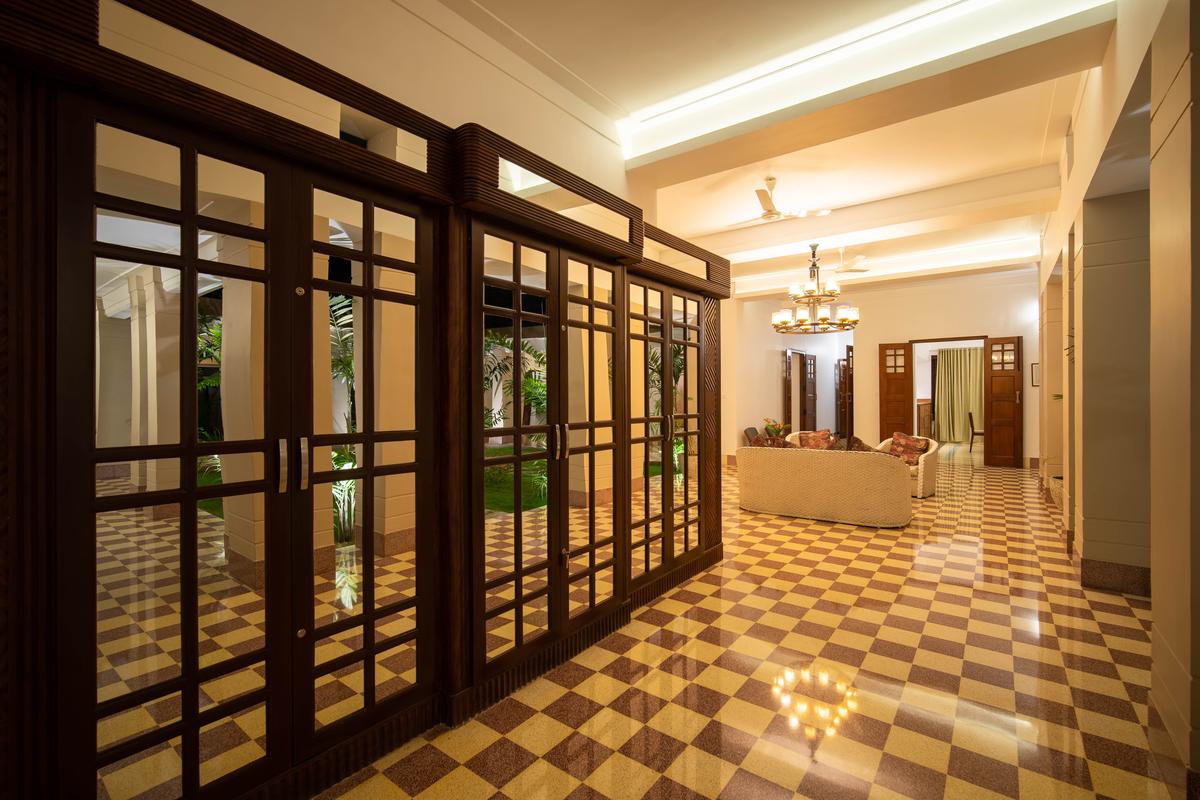
Kallukunnu House interiors
This home was used by the family till the death of Thressi’s brother-in-law around six years ago. “We had to shut down the house… the first time that house was ever locked,” she says. For three years, it stayed that way until the family decided to restore it and open it up to the public, says Thressi, who offers the full house, including breakfast for her guests, and housekeeping services for ₹20,000 per night. The main motive of this homestay, she says, is to promote the her community’s culture, cuisine, and architecture. In keeping with this core premise, the family has also moved and rebuilt part of the very first home constructed by the family nearly 300 years ago, restored it using the original materials used to create it, such as laterite stone, lime and egg white, and converted it into a museum “to showcase the old-style living,” informs Thressi.
Losing an old style of living
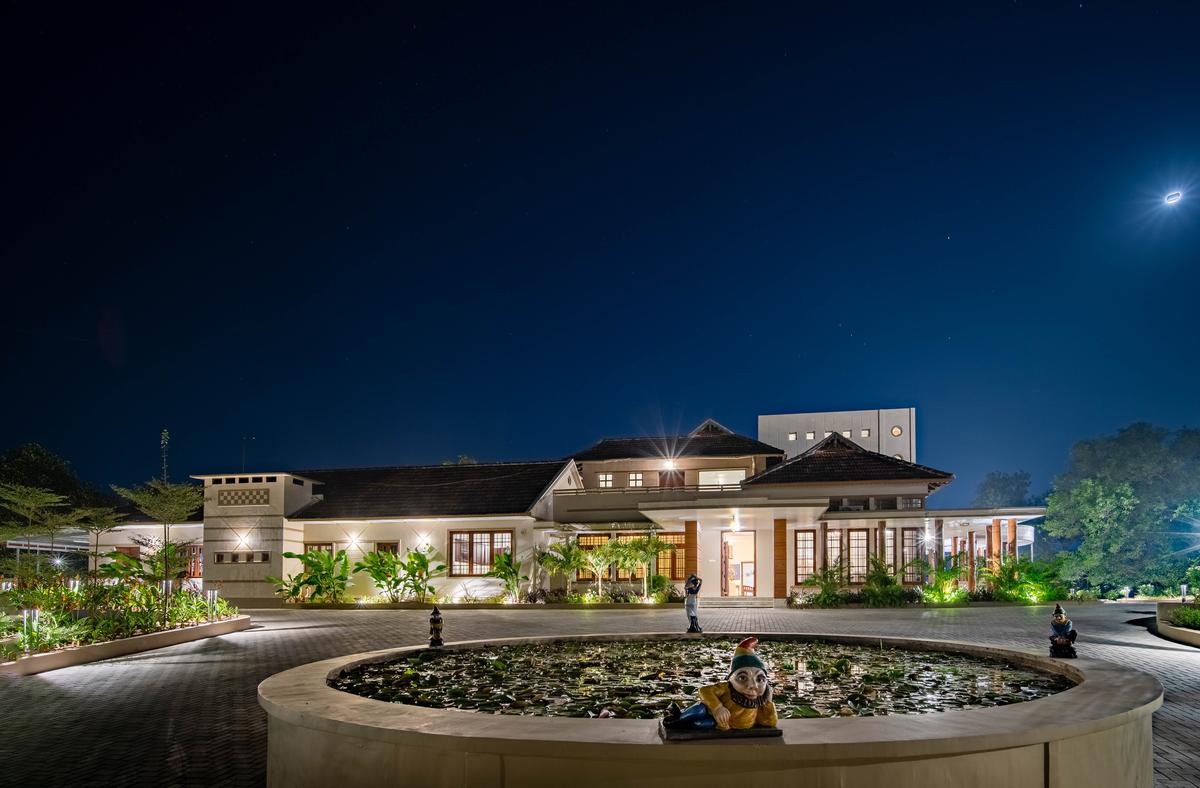
Kallukunnu House
This old style of living is, after all, fast disappearing, as Mathew points out. For instance, in the central Kerala town of Thiruvalla and its adjoining villages, many houses have been left unoccupied due to low fertility rates and because many young people have migrated abroad over the last few decades. “At least one family member is expected to be abroad, particularly in and around Thiruvalla and its neighbouring villages like Kumbanad,” Mathew says, pointing out that since these ancestral homes are so hard to maintain, they have either been demolished or sold off as plots. “With the loss of these homes, the culture and heritage of this once-thriving Christian community have also begun to fade.”

Staying in a heritage home, can offer a more authentic experience
| Photo Credit:
Special Arrangement
Holding onto the Nazarani culture is essential to George Kuruvilla, who runs a construction business in Eraviperoor. When the last remaining heir of the Sankaramangalam Tharavadu in Eraviperoor village planned to move from India to the US, George stepped in to save his family’s 321-year-old ancestral home, with its central courtyard and three wings. “We realised that if somebody else took over the house, we could not anticipate its fate,” says George’s son, Ajin, who moved from Kuwait to Kerala to look after the family home that his father had bought in 2010 from his cousin and painstakingly restored over the next three years. “We are the ninth generation of this family; if my brother and I don’t look after it, who will?” he asks.
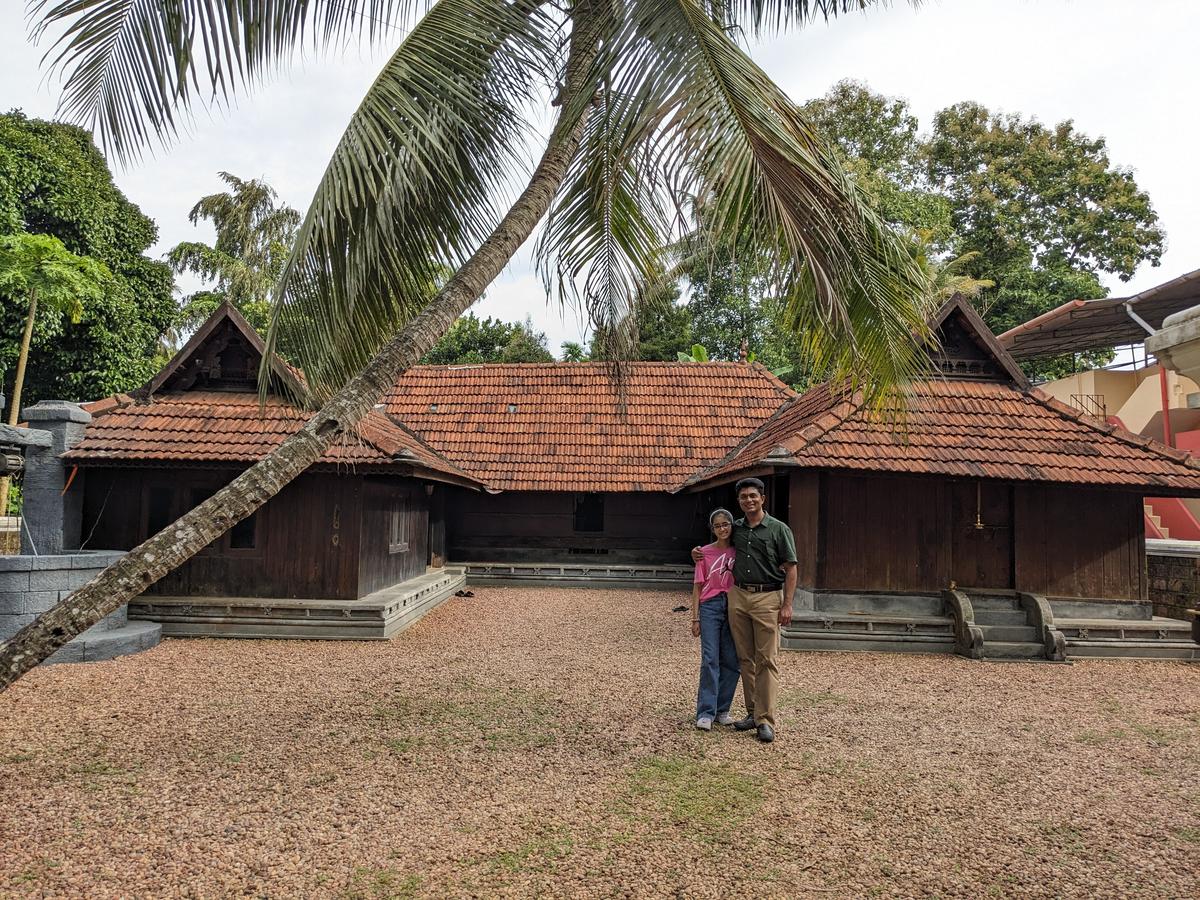
Sankaramangalam Tharavadu is a must-see house for the 5,000-odd members of the Sankaramangalam family
| Photo Credit:
Special Arrangement
Today, Sankaramangalam Tharavadu is a must-see house for the 5,000-odd members of the Sankaramangalam family, who are spread worldwide, a powerful reminder of how its forefathers once lived. The building, which was in a dilapidated condition when they bought it, was renovated without losing its core structure. “We felt that we should retain the old shape and colour,” says Ajin, listing out some of the changes made: changing the flooring, adding air-conditioning, repairing the existing furniture and replacing the veranda’s lime mortar with stone.
In 2021, when they realised the upkeep costs were very high, they decided to take a homestay approach, opening it to the public. “Many people who come to this area are NRIs who, even when they visit Kerala, no longer have their ancestral home,” Ajin says, adding that his home now hosts many wedding parties because of its aesthetic appeal. Visitors are able to enjoy the experience of living in an ancient, traditional building but with all modern amenities, “very different from regular concrete structures,” says Ajin, who charges around ₹5,000 a day for a 1,200-odd square foot house that is five minutes away from the Mannimala river.
Creating an immersive experience
Exploring multidimensional possibilities to support the conversion of heritage or vernacular homes into an “incentivised adaptive reuse” format is something that architect Gisny George of the DHARINNI_Ecology & Heritage Conservation Trust in Kottayam is passionate about. The Trust — a self-funded, research-based collective — is attempting to do this through its pilot initiative Dhara, which focuses on responsible tourism for micro-regional conservation in Kerala. “Tourism is not the only solution, but it is the most open-ended sector when it comes to having a conversation about heritage and cultural identities,” believes Gisny, who thinks of this practice of converting heritage hotels into homestays as a more sustainable form of tourism. “When you are a leisure traveller, the hotel is the most intimate part of your journey, so why can that not be the core of your experience?” Staying in a heritage home, which “is more subtle and rooted to a place, gives you a deeper connect, a more authentic experience,” she believes.

Inside CVM House
Also, in a globalised world with blurry boundaries, where many indigenous microcultures are disintegrating, heritage homestays could help “bring in a dialogue between a transient and the local,” Gisny says.
Kurien CK, who owns and manages Akkarã Homestay in Kottayam, one of the oldest players in the business, was keen on this right from the start. “There is heritage, history and character that we wanted to preserve, enjoy and share with people,” he says. It has not been easy, involving “a lot of hands-on work”, says Kurien, who opened up his 220-year-old family home to guests nearly three decades ago. But, for him, it was about keeping his family home alive and inviting people to come and experience an authentic Syrian Christian lifestyle.
At Akkarã Homestay, which has retained nearly all the elements of the original house, with the addition of some modern technology, visitors can experience Syrian Christian food, explore nearby heritage sites, and go for an Ayurvedic massage, fishing, river cruise or plantation visit, among other things. “To give you an analogy, our house used to be a little like Downton Abbey, with a large staff, people walking in and out, rich culture, landholdings,” he says of the property, where double rooms cost around Rs 3500/day, inclusive of breakfast and taxes. “Two hundred and twenty years is not a small period of time. We just wanted to get our visitors to experience that life.”
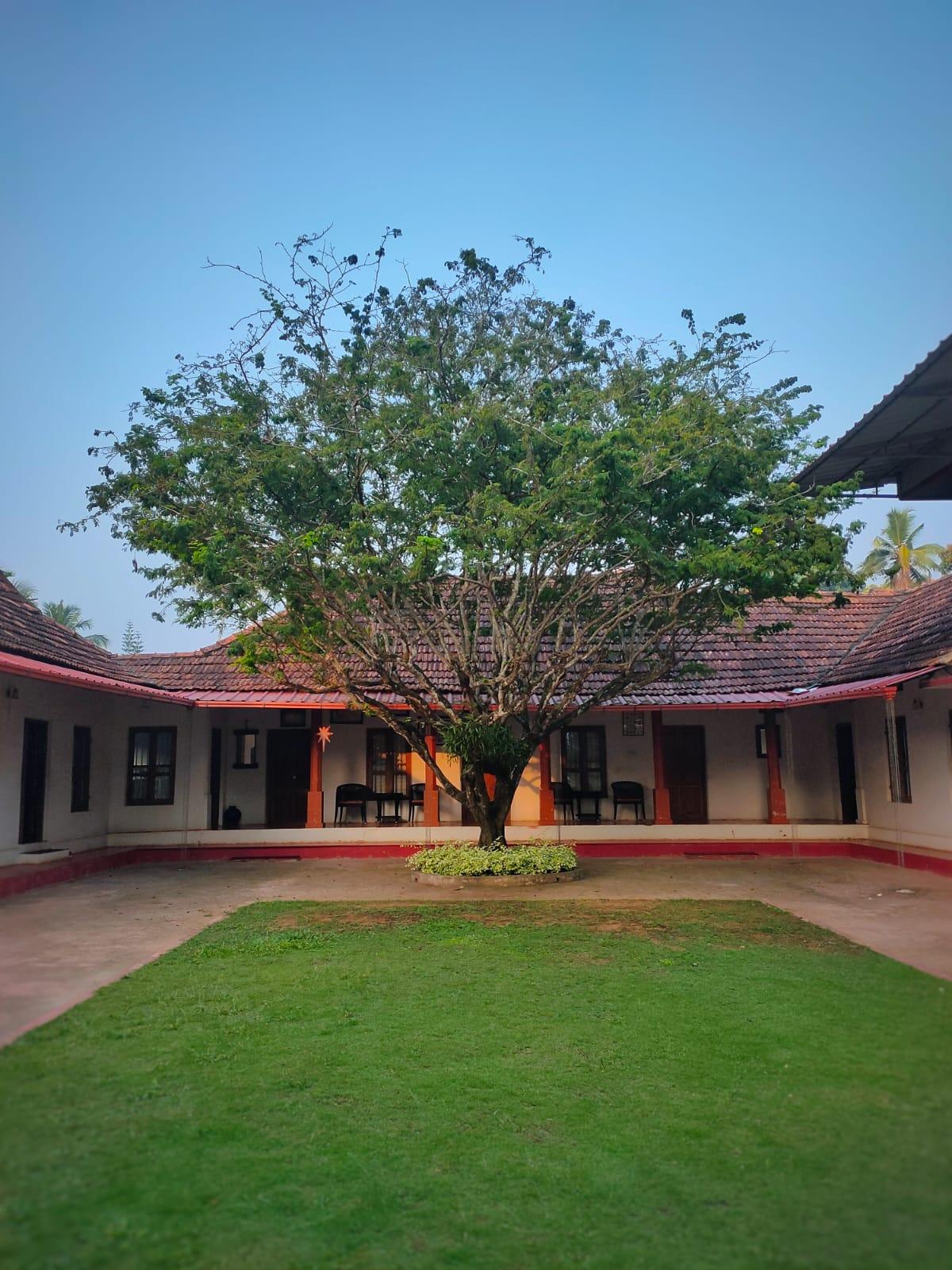
Akkarã Homestay
| Photo Credit:
Special Arrangement
This perspective is shared by Divya Mathai, who renovated and looks after the colonial-style, high-ceilinged ‘Kallukunnu House’ in Kottayam belonging to her father-in-law, George Varughese. Despite a touch of modern flair, the 80-year-old house, designed by the renowned architect and town planner JC Alexander and once home to celebrated cookbook author Mrs BF Varughese, still exudes its old-world charm, says Divya.
In her opinion, the house, which costs around ₹ 60,000 per day for the entire property, is a perfect venue for weddings, baptisms, family holidays, and parties, one that offers a highly immersive experience of the state in which it is located, she believes. “Kerala has so much to give,” Divya enthuses. “The greenery, the backwaters, the homes—it’s magic.” According to her, guests come for more than a stay; they come to slow down and soak in life as it’s meant to be: ethakka appam and chaya at sunset, hours spent with a book on the breezy veranda, and the kind of simple pleasures immortalised in books like The God of Small Things or The Covenant of Water “except here, you’re not reading about it. You’re living it.”
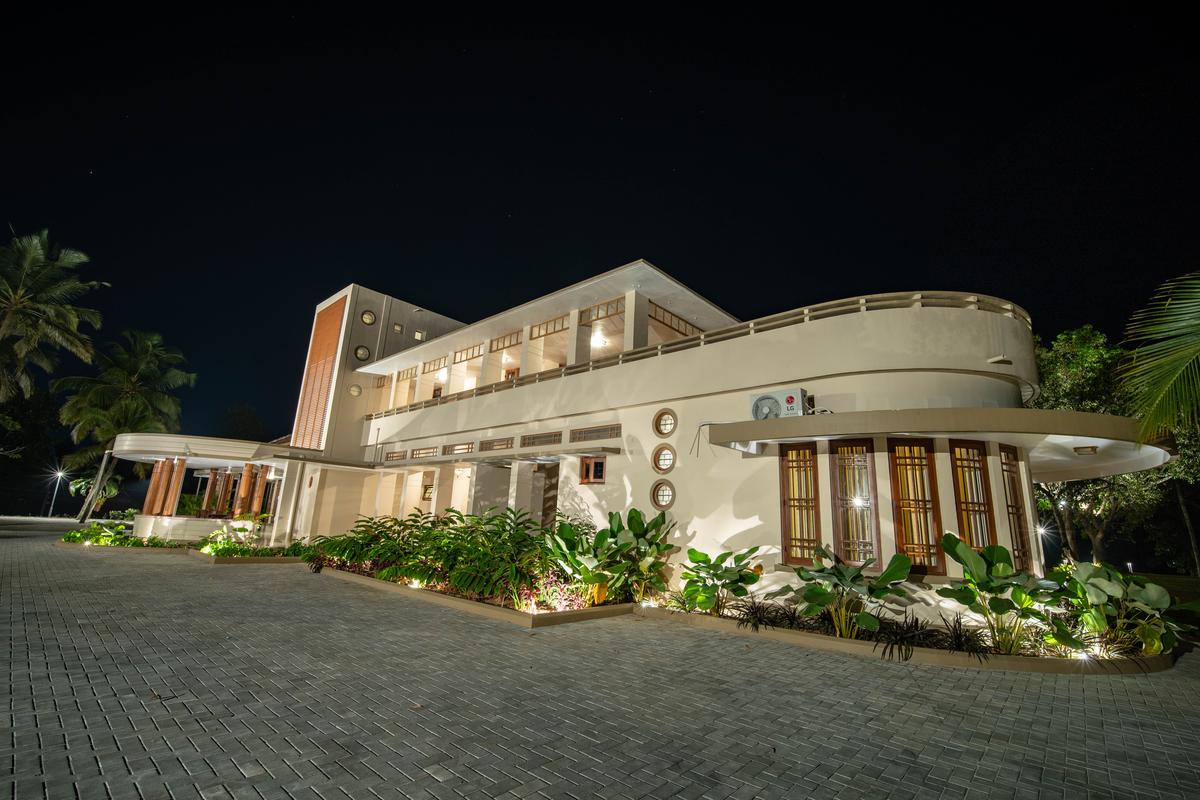
At Kallukunnu House
Published – April 18, 2025 01:08 pm IST








